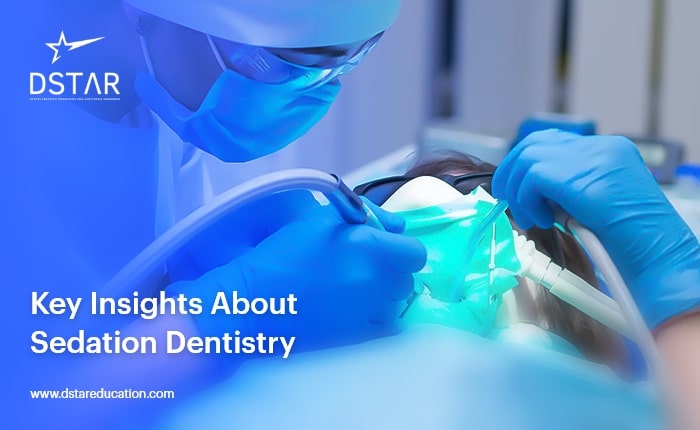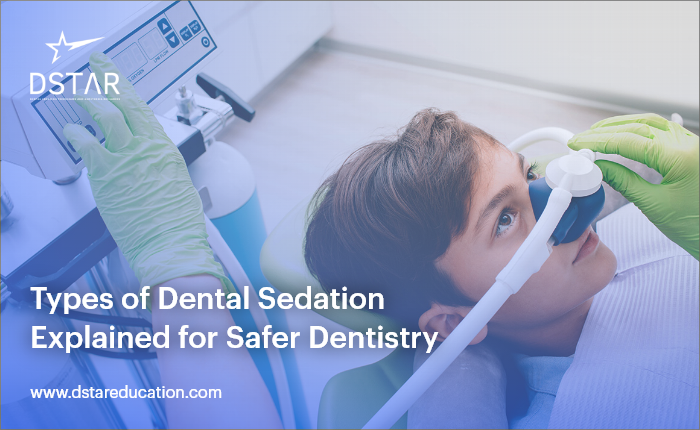Many patients avoid dental care not because of inadequate treatment but due to fear. Dental anxiety prevents millions from pursuing necessary procedures, resulting in the worsening of oral health over time.
Dentists regularly encounter cases where patients cancel appointments, exhibit physical distress during procedures, or delay essential care. Sedation dentistry offers a structured solution to this problem. And dentists and dental practitioners need to keep themselves updated through online dental CE courses.
When administered responsibly, sedation facilitates patient cooperation, reduces procedural stress, and improves clinical efficiency.
This article provides a comprehensive overview of sedation dentistry, including the various types, the clinical applications of IV sedation, and the practical benefits it offers. Whether practitioners seek to integrate sedation techniques or enhance existing protocols, these insights support informed, high-quality care.
Defining Sedation Dentistry
Sedation dentistry involves the administration of pharmacological agents to reduce patient anxiety and discomfort during dental procedures. Unlike general anesthesia, which induces unconsciousness, sedation methods allow patients to remain awake while remaining calm and compliant.
This approach supports patients with dental phobia, individuals requiring prolonged treatment sessions, or those with physical or cognitive conditions that interfere with standard care. Have a look at our dental sedation courses.
Types of Sedation Dentistry
Clinicians must evaluate the sedation method best suited to each patient. The following outlines the principal forms used in dental practice:
Oral Sedation (Oral Benzodiazepines)
Patients receive an oral sedative, typically a benzodiazepine, prior to treatment. This method decreases anxiety and increases procedural compliance. Clear preoperative instructions regarding dosage, fasting, and supervision are critical to ensure both safety and efficacy.
Intravenous (IV) Sedation
IV sedation involves the direct delivery of sedative medication into the patient’s bloodstream. It allows for immediate onset and real-time dosage adjustment, making it appropriate for individuals with significant anxiety or complex treatment needs. Patients often retain limited or no memory of the procedure, which can reduce anticipatory anxiety and support long-term treatment adherence. You need to be updated with IV Sedation Course for Dentists, which enables dentists to provide a higher level of care to patients who might otherwise experience anxiety or pain during complex dental procedures.
Inhalation Sedation (Nitrous Oxide)
Nitrous oxide produces a light level of sedation characterized by reduced anxiety and increased relaxation, while maintaining full consciousness. Its rapid elimination permits patients to safely resume normal activities shortly after treatment completion.
General Anesthesia
General anesthesia induces complete unconsciousness and is reserved for cases involving patients with special needs or highly invasive surgical interventions. A qualified anesthesiologist must manage this form of sedation in a hospital or surgical setting equipped for comprehensive monitoring.
Clinical Benefits of Sedation Dentistry
When properly implemented, sedation dentistry offers measurable advantages for both patients and dental professionals:
Reduction of Anxiety and Fear
Sedation mitigates psychological distress, allowing patients to approach treatment without fear. This reduction in anxiety leads to increased appointment adherence and improved overall cooperation.
Execution of Multiple Procedures in One Visit
Sedation enables dentists to complete several procedures during a single session without overwhelming the patient. This operational efficiency enhances patient satisfaction and simplifies treatment planning.
Control of the Gag Reflex
Patients with a pronounced gag reflex often experience difficulties during procedures. Sedation reduces involuntary muscular response, thereby improving accessibility and procedural accuracy.
Enhanced Pain Tolerance
Although local anesthesia provides targeted pain control, sedation enhances overall comfort by dulling pain perception and fostering emotional detachment from physical sensations.
Safety Protocols in Sedation Dentistry
Effective sedation requires strict adherence to safety protocols. You can get this through online dental sedation courses. Proper planning and monitoring reduce risk and promote patients trust.
Comprehensive Patient Evaluation
A complete medical history must be obtained prior to administering sedation. Dentists must assess current medications, preexisting conditions, and potential drug interactions to select the safest method.
Continuous Physiological Monitoring
During all sedated procedures, practitioners must monitor oxygen saturation, blood pressure, and heart rate. Real-time data facilitates immediate response to any deviations from normal values.
Clear Recovery Guidelines
Patients must receive thorough instructions regarding post-sedation care. Those receiving oral or IV sedation require a responsible escort following the procedure. Post-operative guidance ensures safe recovery and minimizes complications.
Conclusion
Sedation dentistry transforms the patient experience by making treatment accessible, tolerable, and effective for individuals who would otherwise avoid care. By understanding the various dental sedation techniques, adhering to rigorous safety standards, and communicating effectively with patients, dental professionals deliver care with precision and compassion. A strong command of sedation techniques not only improves clinical outcomes but also establishes long-term trust between dentist and patient.
References
- A1 Dental. (n.d.). How Safe Is Sedation Dentistry? What You Should Know.
HYPERLINK “https://a1dental.com.au/how-safe-is-sedation-dentistry-what-you-should-know” - Henderson Mill Dental Care. (n.d.). Why Sedation Dentistry in Atlanta Is the Key to a Comfortable Dental Experience.
HYPERLINK “https://hendersonmilldentalcare.com/why-sedation-dentistry-in-atlanta-is-the-key-to-a-comfortable-dental-experience” - Glacier Peak Dentistry. (n.d.). Important Facts You Should Know About Sedation Dentistry.
HYPERLINK “https://glacierpeakdentistry.com/important-facts-you-should-know-about-sedation-dentistry” - Bellflower Dental Group. (n.d.). Discover Essential Facts About Sedation Dentistry in Bellflower, CA.
HYPERLINK “https://www.bellflowerdentalgroup.com/dentistry-blog/discover-essential-facts-about-sedation-dentistry-in-bellflower-ca” - Family Dentist Chandler. (n.d.). Is Sedation Dentistry Safe? What You Should Know Before Your Appointment.
HYPERLINK “https://familydentistchandler.com/is-sedation-dentistry-safe-what-you-should-know-before-your-appointment” - Advanced Dental TMJ. (n.d.). Sedation Dentistry.
 Take Free TSBDE Anesthesia Jurisprudence Practice Exam Now!
Take Free TSBDE Anesthesia Jurisprudence Practice Exam Now!












